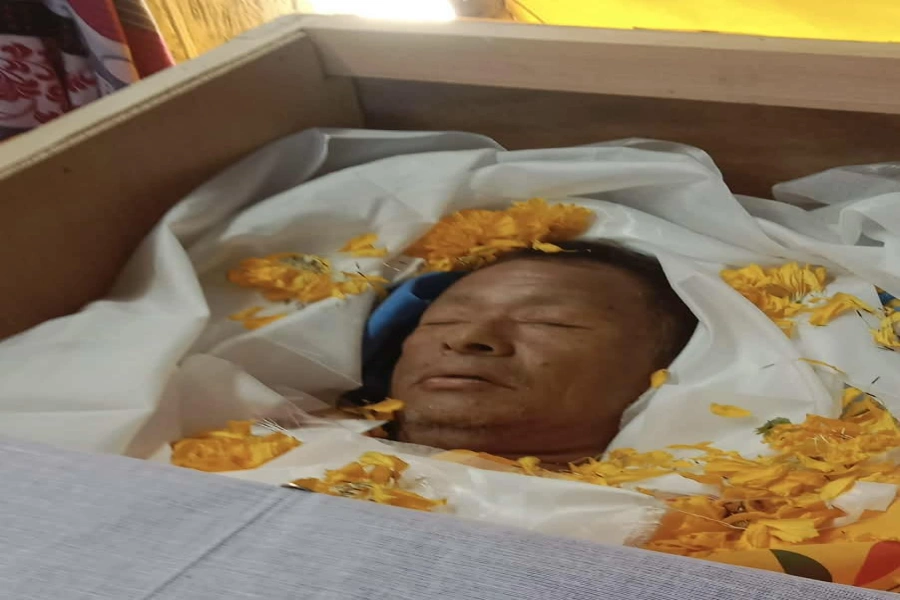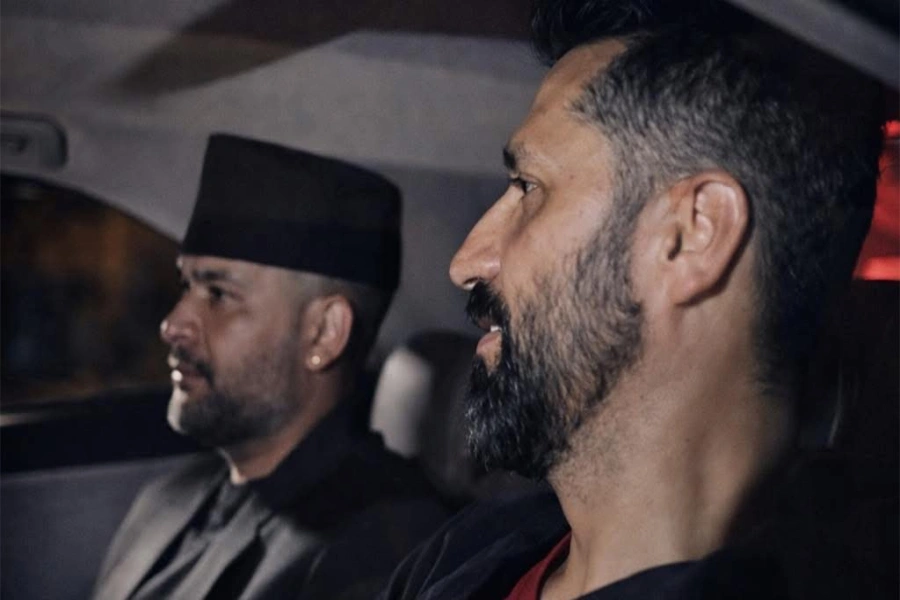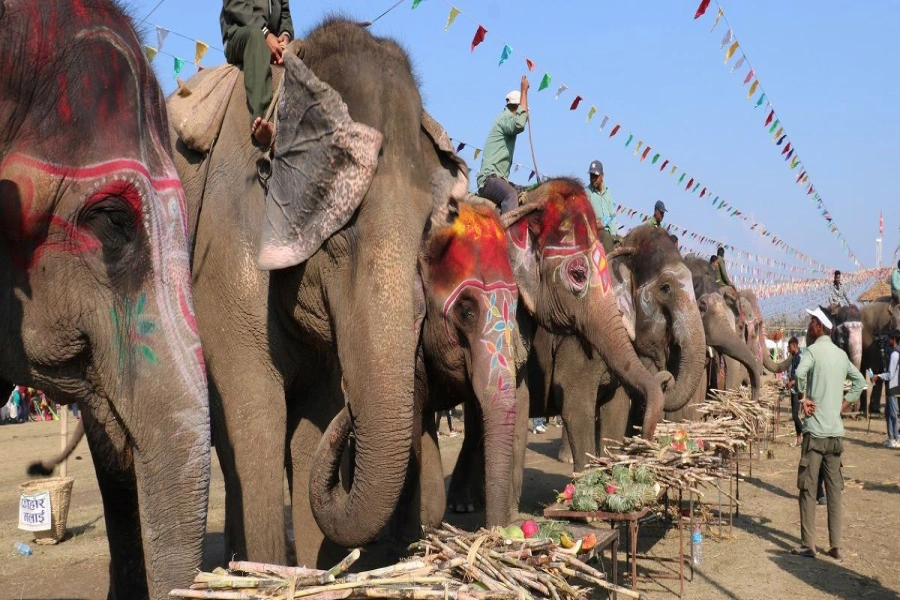KATHMANDU, Nov 14: Purna Bahadur Ko Sarangi has emerged as an invaluable contribution to the Nepali film industry, presenting a moving depiction of Nepali society. Through its sensitive portrayal of love, sacrifice, and interconnectedness, the film sheds light on the depth of human relationships.
More than a mere narrative of the Gandharva community, this film powerfully uncovers societal realities, including the persistent wounds caused by entrenched class divisions.
At its core, Purna Bahadur Ko Sarangi delves into the life of the Gandharva community, where music and cultural tradition serve as a means of survival. Under the direction of Saroj Paudel, the film unfolds with vivid realism and emotional intensity, capturing the multi-faceted essence of Nepali society.
The story centers on Purna Bahadur, a member of the Dalit (Gandharva) community, who sustains himself by playing the sarangi. For him, the sarangi is not only a tool for making a living but also an extension of his emotions and identity, through which he conveys his joy, sorrow, pain, and frustration.
Despite the constant rejection and disregard he faces from society, Purna Bahadur remains deeply connected to his sarangi, seeing it as an essential part of his being and his primary form of self-expression, a medium through which his inner life finds release.
Actor Bijay Baral delivers a compelling portrayal of Purna Bahadur, bringing this character to life with authenticity that evokes empathy from the audience. His performance embodies Purna Bahadur’s dreams and hardships, enabling viewers to see reflections of their own struggles and connections in his journey.
The film poignantly explores the sacrifices and love within a father-son relationship. This dynamic is portrayed not only as one of affection and dedication but also of resilience and strength.
The father’s selflessness and the son’s respect lie at the heart of the movie, extending its impact beyond mere entertainment. It inspires viewers to recognize the sacrifices of their own families, especially parents, and to reflect on their values.
Spreading Happiness with a Sarangi

While Purna Bahadur repeatedly encounters rejection from society, he perseveres, finding meaning and identity through his sarangi. This struggle is a testament not only to his individual journey but also to a broader story of social inequity and resilience, echoing a message of change and challenging societal norms.
The film’s cinematography vividly captures the natural beauty of rural Nepal, portraying village life, mountainous landscapes, and societal truths in a way that enhances its visual and emotional appeal.
Purna Bahadur Ko Sarangi does more than recount a story; it brings to life a cultural landscape, a way of life, and a profound social message, leaving an enduring impact on viewers.
This portrayal offers a glimpse into the lives of countless people like Purna Bahadur, whose daily struggles are often overlooked. While his hardships are difficult to fully grasp, the film compels viewers to stand in his shoes, to imagine the emotions of a man who, despite society’s rejection, finds solace and purpose in his sarangi.
For Purna Bahadur, the sarangi is more than an instrument; it is his lifeline, his medium of expression, and a symbol of his identity. When he plays, audiences are drawn into his pain, compelled to empathize with his journey.
The film’s soundtrack, particularly the evocative notes of the sarangi, adds depth to Purna Bahadur’s story, capturing his life’s struggles, pains, and dreams in a way that resonates deeply with the audience, amplifying the emotional impact of the narrative.
The character of Purna Bahadur also raises a broader question about why society marginalizes individuals and entire communities, shedding light on the Gandharva community’s unique cultural identity and social challenges.
Storyline
Purna Bahadur Gandharva, the film’s central character, is dedicated to his ancestral craft, traveling from village to village, singing and playing his sarangi. Although society looks down upon him, he is determined to uphold this tradition, not only for his dignity but also for his child’s future.
Purna’s wife, Batuli, is a critical figure in this story, deeply affected by the scorn directed at her husband. She hopes for a better life for their son, making sacrifices to secure his future despite society’s disregard for her status. Batuli embodies resilience and dignity as she navigates a path forward for her family.
Father-Son Relationship
At its heart, the film explores the relationship and struggles between father and son. Purna Bahadur dedicates his life to guiding his son while shielding him from the discrimination he faced. His efforts to build a brighter future for his child resonate profoundly, reminding viewers of the sacrifices, love, and dreams held by every parent.
The Struggle of the Gandharva Community
The film presents a raw, realistic portrayal of the Gandharva community’s struggles. While society enjoys their music, the harsh reality is that the community’s contributions are seldom acknowledged.
Purna Bahadur’s dedication to preserving his community’s traditions confronts audiences with the struggles of the Gandharva community, highlighting that the sarangi is not only a musical instrument but a symbol of identity and pride. However, the lack of financial security and limited future prospects lead younger generations to seek alternative paths.
The Cast’s Performance
Bijay Baral’s portrayal of Purna Bahadur is outstanding, imbuing his role with depth that captures the audience's empathy. Through his character, the film powerfully illustrates a father’s sacrifices and dreams for his child, juxtaposed against societal discrimination.
Anjana Baraily’s performance as Batuli adds emotional resonance, while Buddhi Tamang and Mukun Bhushal deliver strong supporting roles. Bhola Raj Sapkota’s character highlights society’s double standards, revealing the contradictions in how it views the working class and marginalized communities.
Music and Dialogue
The film’s score, particularly the evocative sarangi music, adds depth to Purna Bahadur’s journey, portraying his life’s hardships and dreams with emotional poignancy. Each note tells a story, resonating with the audience and amplifying the film’s impact.
The dialogue is another standout feature, conveying powerful messages about the Gandharva community’s plight through concise, meaningful lines. Each word carries weight, giving voice to the social themes without resorting to lengthy speeches.
Purna Bahadur Ko Sarangi is more than entertainment; it provides a nuanced perspective on society, stirring viewers with the struggles and resilience of the Gandharva community. Through the story of a marginalized yet resilient community, the film not only touches hearts but also encourages viewers to reconsider society's treatment of its most vulnerable members.







































